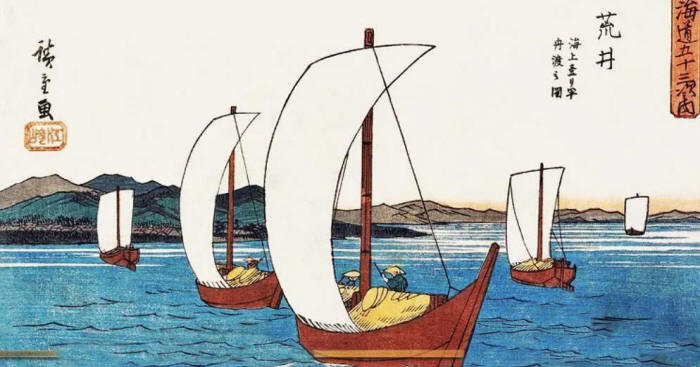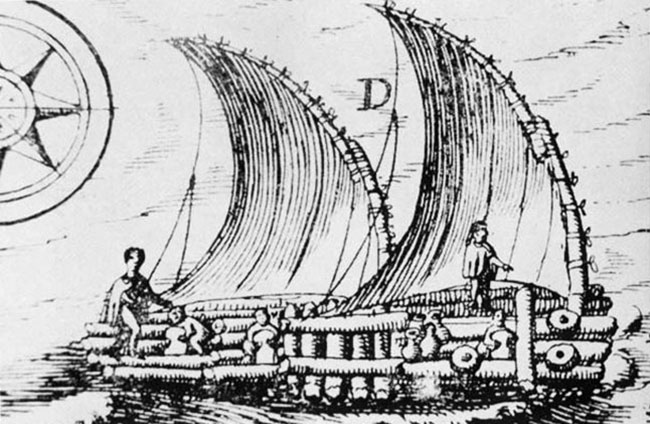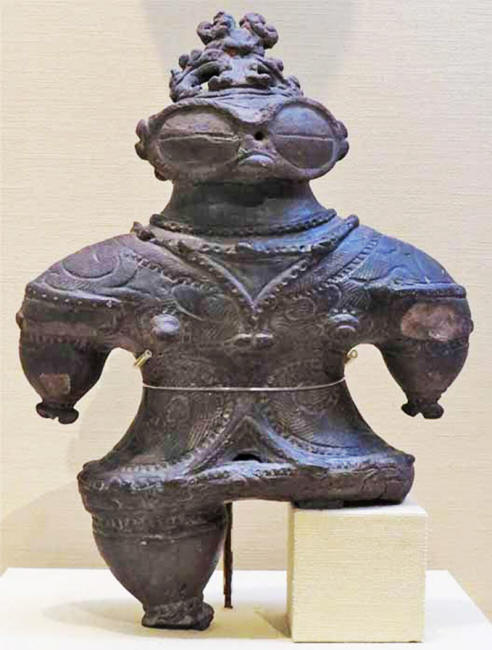|

by Ashley Cowie
February 24, 2023
from
Ancient-Origins Website
|
Ashley Cowie / Historian
and Documentarian
Ashley is
a Scottish historian,
author and documentary filmmaker presenting original
perspectives on historical problems, in accessible and
exciting ways.
His books, articles and
television shows explore lost cultures and kingdoms,
ancient crafts and artifacts, symbols and architecture,
myths and legends telling thought-provoking stories
which together offer insights into our shared social
history.
In his 20's Ashley was based
in Caithness on the north east coast of Scotland and
walked thousands of miles across ancient Neolithic
landscapes collecting flint artifacts, which led to the
discovery of significant Neolithic settlements.
Having delivered a series of
highly acclaimed lectures on the international Science
Festival Circuit about his discoveries, he has since
written four bestselling non-fiction books. |

Utagawa
Hiroshige's Sailing Boats at Arai
The notion that pre-Columbian cultures from Europe, Africa, or Asia
sailed across the Atlantic and Pacific oceans to discover America,
is a popular theory backed by numerous books and television
documentaries.
While most of these claims seem baseless, one
theory did gain some credibility, in that it was backed by a
reputable archaeologist from the esteemed Smithsonian Institution,
the so-called 'Jomon-Valdivia
hypothesis'.
Until recently, mainstream historians and
archaeologists most often shunned ideas about ancient
transcontinental oceanic travel and the entire notion was considered
as pseudoscience.
Even in the face of new findings around the world
that support the idea that oceans were travelled by ancient peoples
who had both the motivation, and means to do so, many archaeologists
still refuse to engage with the term "ancient transoceanic voyage."
And this is not as dogmatic as one might at first
think, for the history of the subject is infected with mistakes,
misinterpretations, and hoaxes that have left trails of confusion in
their wake.

A
drawing of a raft (balsa) near Guayaquil, Ecuador in 1748.
The
drawing resembles the description given by 16th-century Spanish
explorers
of the
rafts used by Indians. (Public Domain)
Some theorists suggest that,
the lost tribes from Israel appeared in North
America, or that Phoenicians made it to Lake Titicaca in
Bolivia...
But no one story has left such a wake of
confusion as the 'Jomon-Valdivia hypothesis', a 50-year long
archaeological delusion that suggested,
the ancient peoples of Ecuador did not
develop their own culture, but that they inherited it from
prehistoric fishermen from Japan around 3000 BC...

Final Jomon
dogū (土偶) earthenware figure
(c. 1000 - 400 BC) (CC BY-SA 4.0)
The
Jomon period in Japanese
history extended from circa 14,000-300 BC and represents an epoch
when diverse hunter-gatherer groups merged with early
agriculturalists through a common Jomon culture.
The name 'Jomon' means cord-marked,
referring to,
the twisted cord impressions that decorate
the iconic pottery from this time, which is generally accepted
to be among the oldest decorated clay crafts in the world.
The earliest pottery fragments in Japan were
found at the
Odai Yamamoto I site in 1998
and date back to 14,500 BC, and similarly dated pottery was later
recovered from the Kamikuroiwa archaeological site, and from
within the Fukui cave.
|




